Created March 1300 | ||
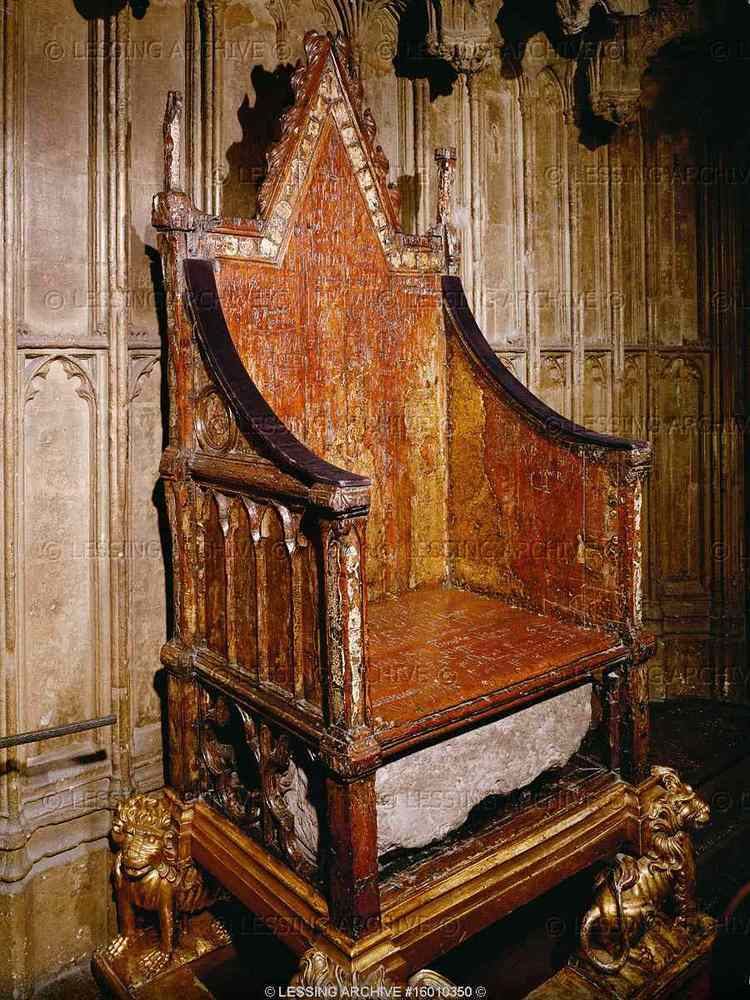 | ||
Similar Westminster Abbey, Scone Abbey, Poets' Corner, Henry VII Chapel, Kinniside Stone Circle | ||
Why build a coronation chair for a 2 foot slab of sandstone
The Coronation Chair, known historically as St Edward's Chair or King Edward's Chair, is an ancient wooden throne on which the British monarch sits when he or she is invested with regalia and crowned at the coronation. It was commissioned in 1296 by King Edward I to contain the coronation stone of Scotland – known as the Stone of Scone – which had been captured from the Scots who kept it at Scone Abbey. The chair was named after Edward the Confessor, and was previously kept in his shrine at Westminster Abbey.
Contents
- Why build a coronation chair for a 2 foot slab of sandstone
- Replica coronation chairs 1937
- History
- Other chairs used at the coronation
- References
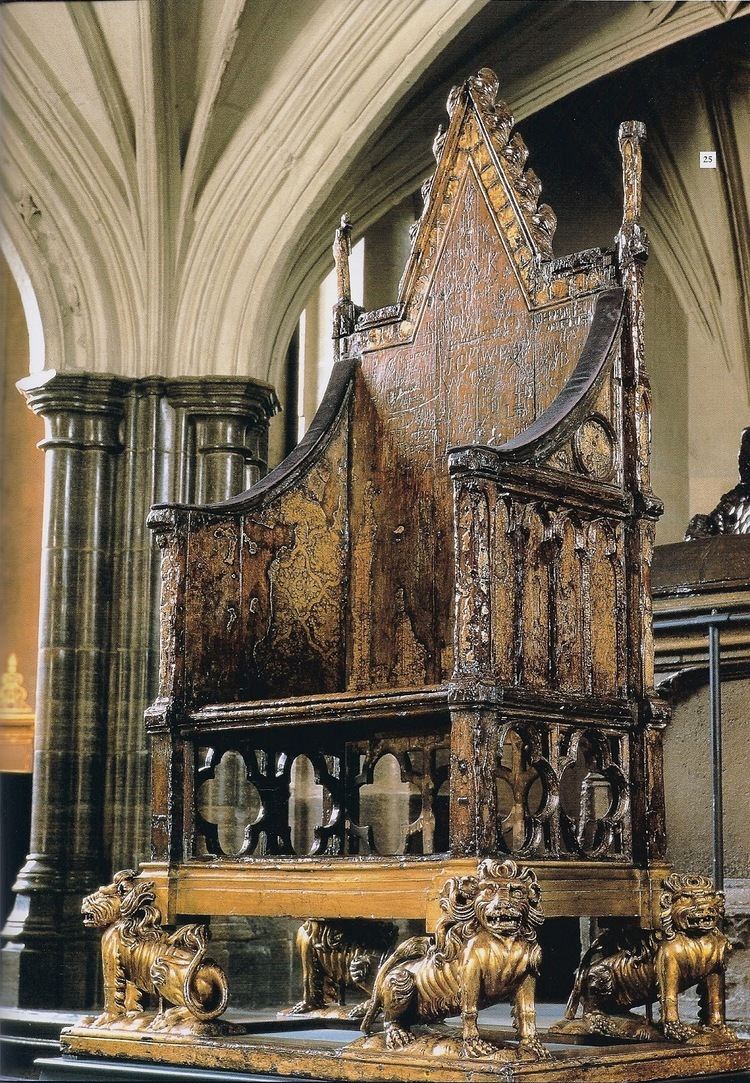
Replica coronation chairs 1937
History
The high-backed, Gothic-style armchair was carved from oak at some point between the summer of 1297 and March 1300 by the carpenter Walter of Durham. At first, the king ordered for the chair to be made of bronze, but he changed his mind and decided it should be made of timber. The chair is the oldest dated piece of English furniture made by a known artist. Since the 14th century, all crowned English and British monarchs have been seated in this chair at the moment of coronation, with the exception of Queen Mary II, who was crowned on a copy of the chair. Monarchs used to sit on the Stone of Scone itself until a wooden platform was added in the 17th century.
Gilded lions added in the 16th century form the legs to the chair; they were all replaced in 1727. One of the four lions was given a new head for George IV's coronation in 1821. The chair itself was originally gilded, painted and inlaid with glass mosaics, traces of which can still be seen upon close inspection of the chair, especially on the back where outlines of foliage, birds and animals have managed to survive. A lost image of a king, maybe Edward the Confessor or Edward I, with his feet resting on a lion was also painted on the back. Today, its appearance is of aged and brittle wood.
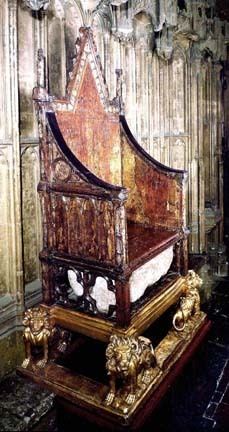
In the 18th century, tourists could sit on the chair for a small payment to one of the vergers. Early tourists and choirboys of the abbey carved their initials and other graffiti into the chair, and the corner posts have been acutely damaged by souvenir hunters. Sir Gilbert Scott, the Gothic revival architect and antiquary, described the chair as "a magnificent piece of decoration, but sadly mutilated".
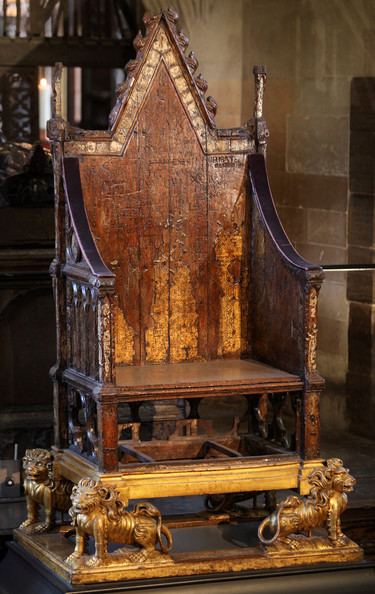
At 5:40 pm on 11 June 1914, the chair was the object of a bomb attack thought to have been organised by the Suffragettes. A corner of the chair was broken off in the explosion. Although it was strong enough to shake the abbey walls and loud enough to be heard from inside the Houses of Parliament, none of the 70 people in the abbey at the time were injured, and the Coronation Chair was faithfully restored.
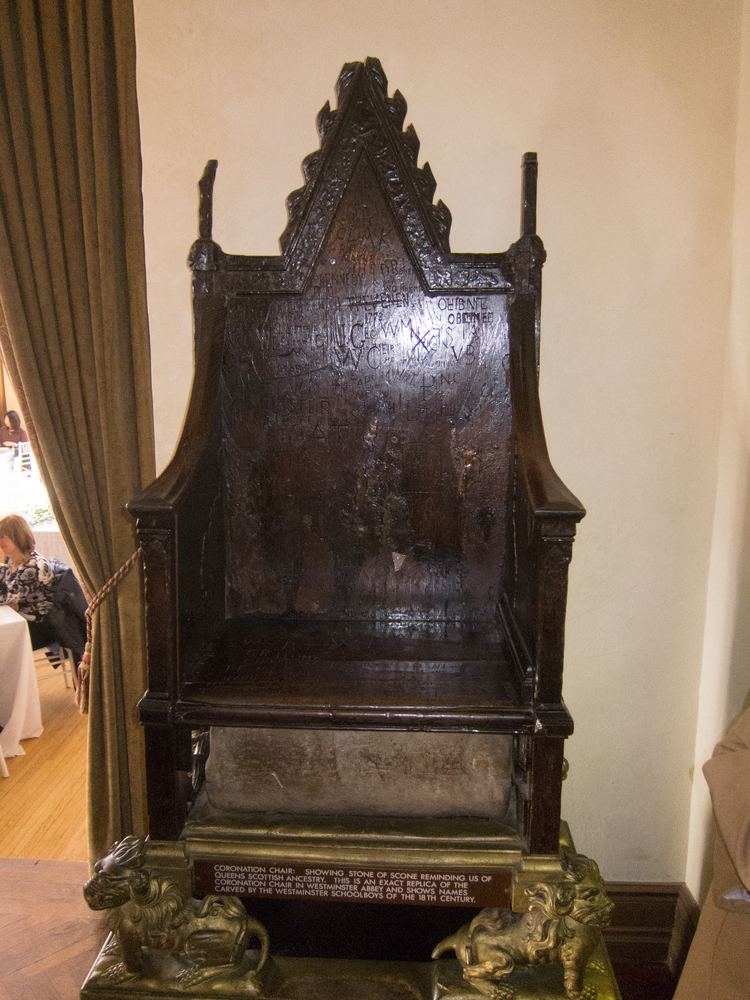
Over the eight centuries of its existence the chair has only been removed from Westminster Abbey twice. The first time was for the ceremony in Westminster Hall when Oliver Cromwell was inducted as Lord Protector of the Commonwealth of England, and the second during World War II when it was moved to Gloucester Cathedral for the duration of the war. On Christmas Day 1950, Scottish Nationalists broke into the abbey and stole the Stone of Scone. It was recovered in time for Queen Elizabeth II's coronation in 1953. Since 1996, it has been kept at Edinburgh Castle in Scotland on the proviso that it be returned to England for use at coronations.

The Coronation Chair is highly protected, and leaves its secure location – now on a plinth in St George's Chapel in the nave – only when it is carried into the theatre of coronation near the High Altar of the abbey. Between 2010 and 2012, the chair was cleaned and restored by a team of experts in full view of the public at the abbey.
Other chairs used at the coronation
It may be noted that other chairs are used throughout the coronation ceremony. Chairs of Estate for the sovereign and consort are placed on the south side of the sanctuary, and these are used during the first part of the liturgy, prior to the sovereign's anointing and crowning with St Edward's Crown. Then, for a part of the service called the enthronement, and for the homage which follows it, the monarch is placed not in the Coronation Chair, but in a separate throne on a platform in the middle of the transept. On occasions when the wife of a king – a queen consort – is crowned, a similar throne is provided for her so that she can be seated next to the king but at a lower level.
Unlike the Coronation Chair, these other chairs and thrones tend to be made new for each coronation. Afterwards, they have often been placed in the Throne Rooms of royal palaces. The Chair of Estate from the 1953 coronation can be found in the Throne Room of Buckingham Palace, along with those of George VI and his consort Queen Elizabeth. The 1953 Homage Throne is kept in the Garter Throne Room of Windsor Castle; the thrones of King Edward VII and Queen Alexandra are in the Ballroom at Buckingham Palace. Those of George V and Queen Mary may be seen in the Throne Room at the Palace of Holyroodhouse in Edinburgh.
